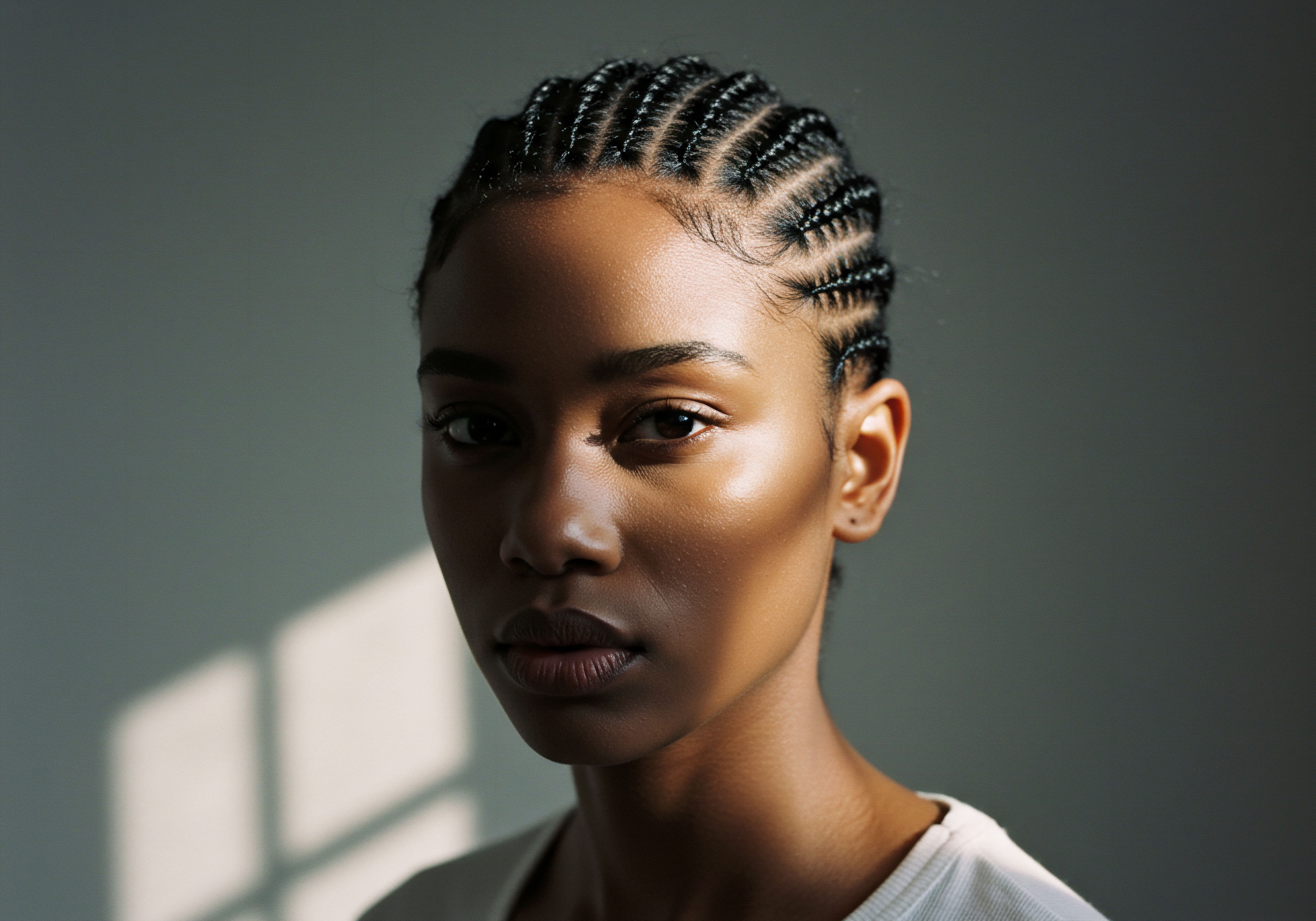
Roots
Consider for a moment the profound intimacy of hair, not merely as a physical attribute, but as a living chronicle. It holds memories, whispers of lineage, and echoes of rituals performed under ancient skies. For those with textured hair, this connection runs particularly deep, extending back through generations to the very heart of African civilizations. The relationship between hair and identity in these societies was not a casual one; it was foundational, a language spoken without words, understood through intricate patterns and deliberate care.
Long before modern salons and product aisles, African communities possessed a sophisticated understanding of hair. They recognized its inherent characteristics, its need for specific handling, and its capacity to communicate. This foundational knowledge, passed down through oral traditions and communal practice, laid the groundwork for what we now recognize as specialized textured hair care. It was a holistic approach, where the well-being of the strands was inseparable from the well-being of the individual and their community.

Hair Anatomy and Physiology Specific to Textured Hair
Textured hair, with its unique helical structure, presents distinct physiological characteristics. Unlike straight hair, which tends to have a more circular cross-section, textured strands often exhibit an elliptical or flattened shape. This shape, combined with the way the keratin proteins are distributed within the hair shaft, creates the beautiful coils, kinks, and curls we observe.
The bends and twists in the hair shaft mean that natural oils produced by the scalp find it more challenging to travel down the entire length of the strand. This anatomical reality contributes to textured hair’s propensity for dryness, making moisture retention a central theme in its care, both then and now.
Each curve in a textured strand represents a point of potential vulnerability. These points are where the hair is most susceptible to breakage if not handled with gentleness. Understanding this intrinsic fragility was key to ancient African practices, which prioritized methods that minimized stress on the hair.
The scalp, too, plays a vital role. A healthy scalp environment is the bedrock for healthy hair growth, a principle deeply respected in ancestral traditions that incorporated various natural remedies for scalp nourishment.
The inherent characteristics of textured hair, particularly its shape and oil distribution, highlight why moisture retention has always been a central concern.

Textured Hair Classification Systems
While modern classification systems, such as those categorizing hair by curl pattern (e.g. 3C, 4A), offer a contemporary framework, ancient African societies possessed their own nuanced ways of distinguishing hair types. These distinctions were often more qualitative and contextual, recognizing not just curl tightness but also hair density, luster, and how it responded to various treatments.
- Coil Patterns ❉ Ancient cultures recognized the tight, spring-like coils, often styling them to highlight their natural volume and resilience.
- Density Variations ❉ Hair thickness and abundance played a role in determining suitable styles and the amount of product needed for conditioning.
- Luster and Health ❉ The vibrancy and shine of hair, indicative of its health, were highly valued and sought after through specific care rituals.
These traditional understandings, though not formalized in charts, guided the selection of appropriate styling techniques and botanical applications. The goal was always to work with the hair’s natural inclinations, rather than against them, a philosophy that resonates deeply with today’s natural hair movement.
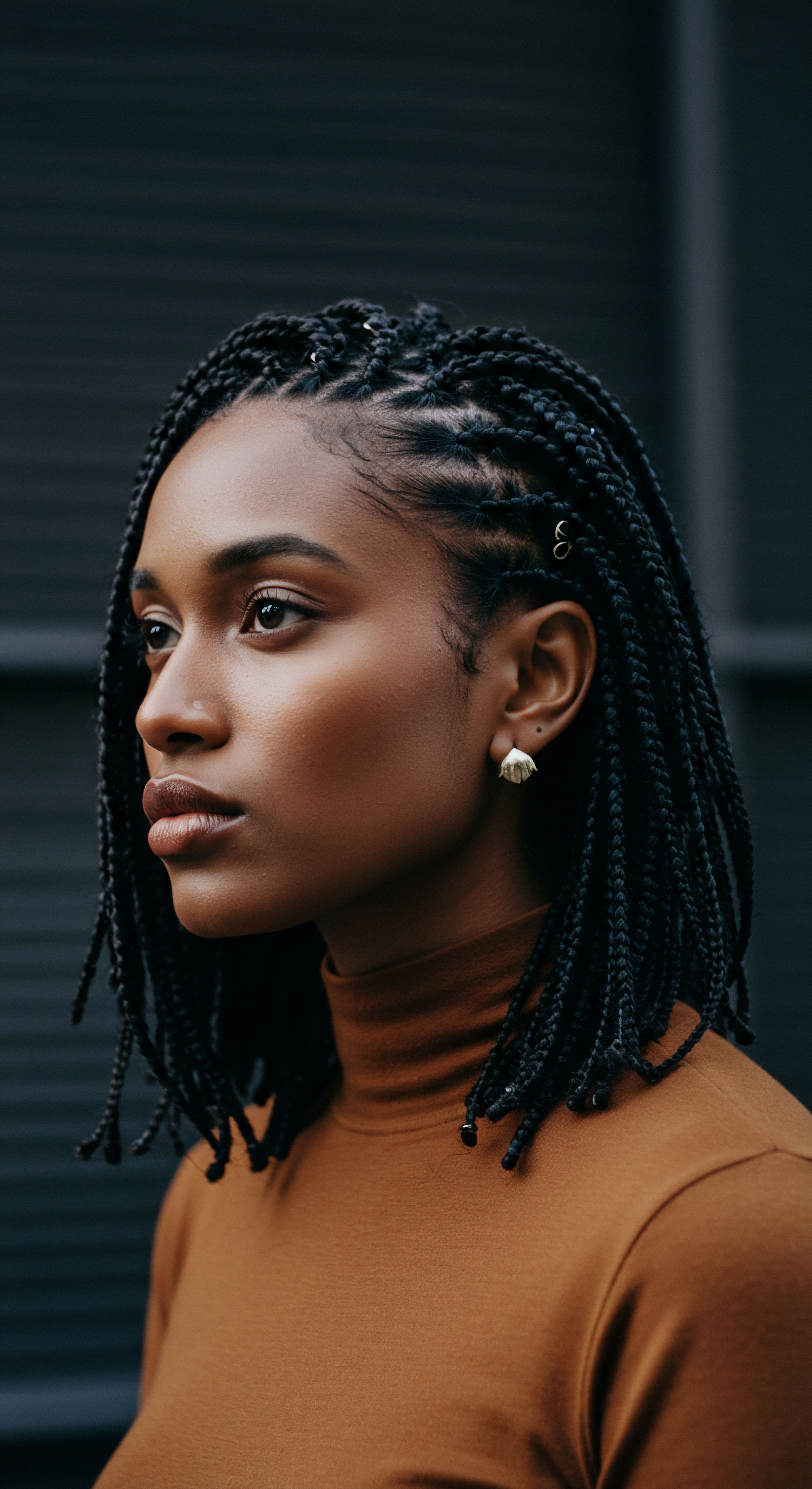
The Essential Lexicon of Textured Hair
The language surrounding textured hair in ancient Africa was rich with descriptive terms, often linked to the specific practices and cultural meanings associated with various styles. These terms conveyed not only the aesthetic but also the social, spiritual, and communal significance of hair. Modern hair care, while employing scientific terminology, also builds upon a lexicon that acknowledges texture, porosity, and elasticity.
Consider the names of various braiding patterns or the descriptive words for hair adorned with clay or oils. These terms were precise, reflecting generations of observation and refinement. The continuation of certain terms, or the coining of new ones to describe rediscovered or adapted practices, illustrates a living linguistic heritage that connects past and present hair care dialogue.
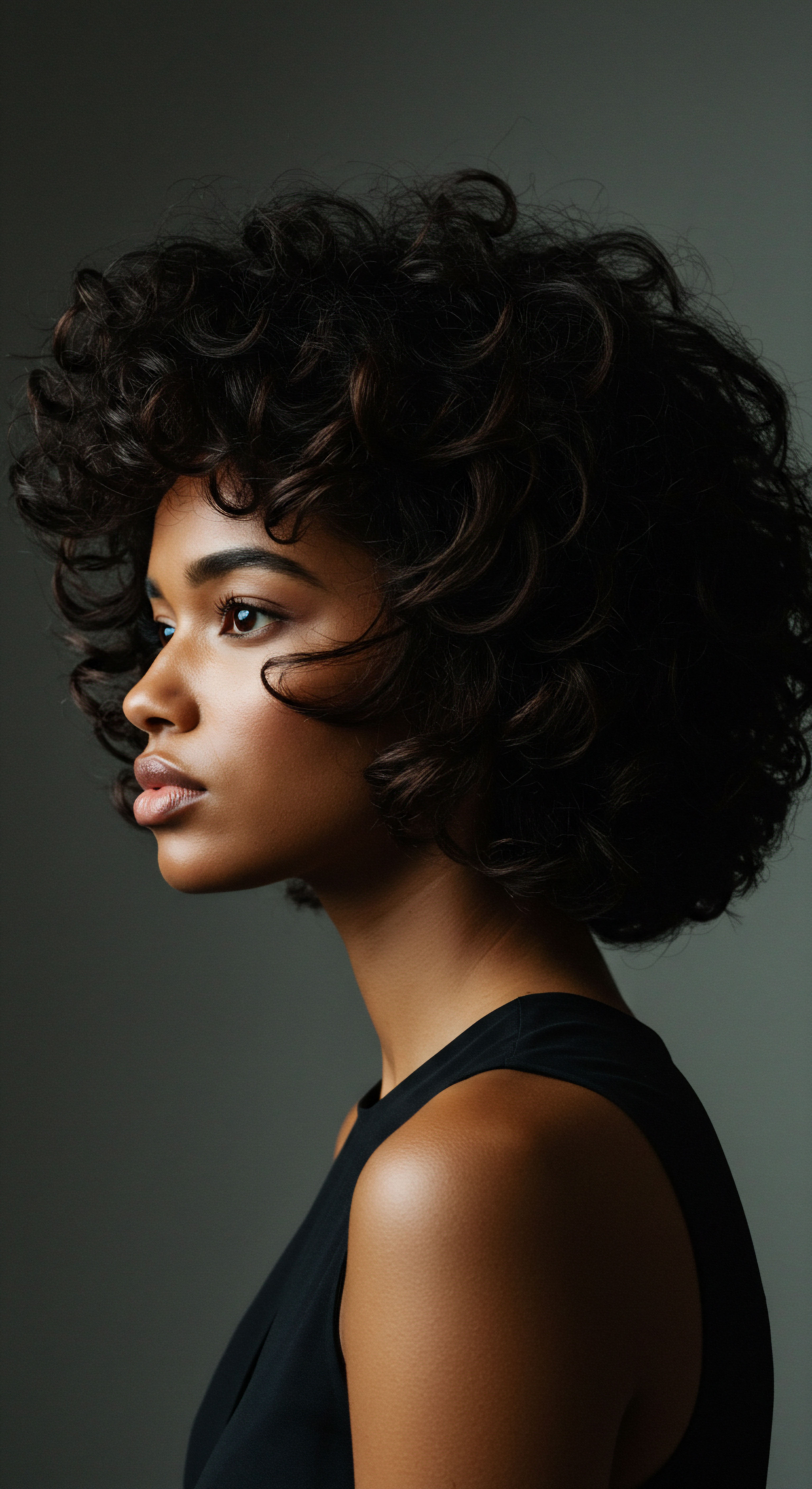
Hair Growth Cycles and Influencing Factors
Ancient African communities, through keen observation, understood the cyclical nature of hair growth. They may not have articulated it in terms of anagen, catagen, and telogen phases, but they certainly recognized periods of growth, rest, and shedding. Their practices often supported healthy growth by minimizing breakage and creating optimal scalp conditions. Factors like diet, climate, and overall health were implicitly understood to influence hair vitality.
Herbal remedies, nutrient-rich oils, and protective styles all served to support the hair’s natural growth cycle. This long-term perspective on hair health, focusing on consistent care and environmental harmony, parallels modern holistic approaches that consider nutrition, stress, and environmental aggressors as significant factors in hair well-being. The emphasis was on sustenance and protection, allowing the hair to reach its potential.
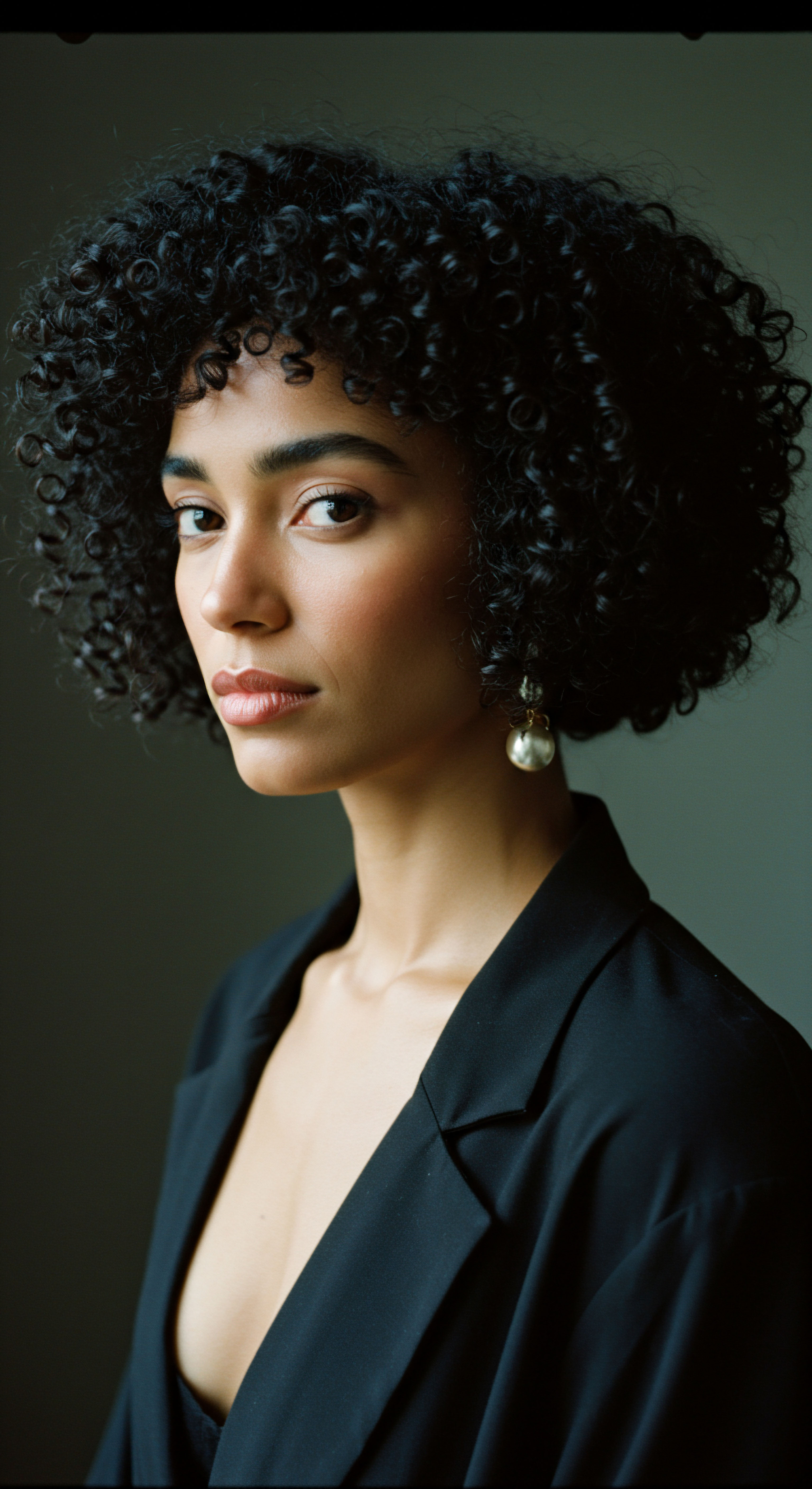
Ritual
Stepping into the realm of hair care rituals from ancient Africa feels like entering a space where every touch, every application, held intention. This was not simply about cleanliness or aesthetics; it was about connection, preservation, and honoring a vital part of one’s being. The modern pursuit of healthy, vibrant textured hair finds a profound mirror in these ancestral practices, which were often communal, mindful, and deeply effective.
The daily or weekly rhythms of hair care, whether for personal adornment or ceremonial preparation, fostered a quiet understanding of hair’s needs. From the selection of natural ingredients to the skilled execution of intricate styles, these practices offered a gentle guidance for sustaining hair health. This section will explore the applied wisdom of these traditions, demonstrating how their spirit and techniques continue to resonate in contemporary routines.
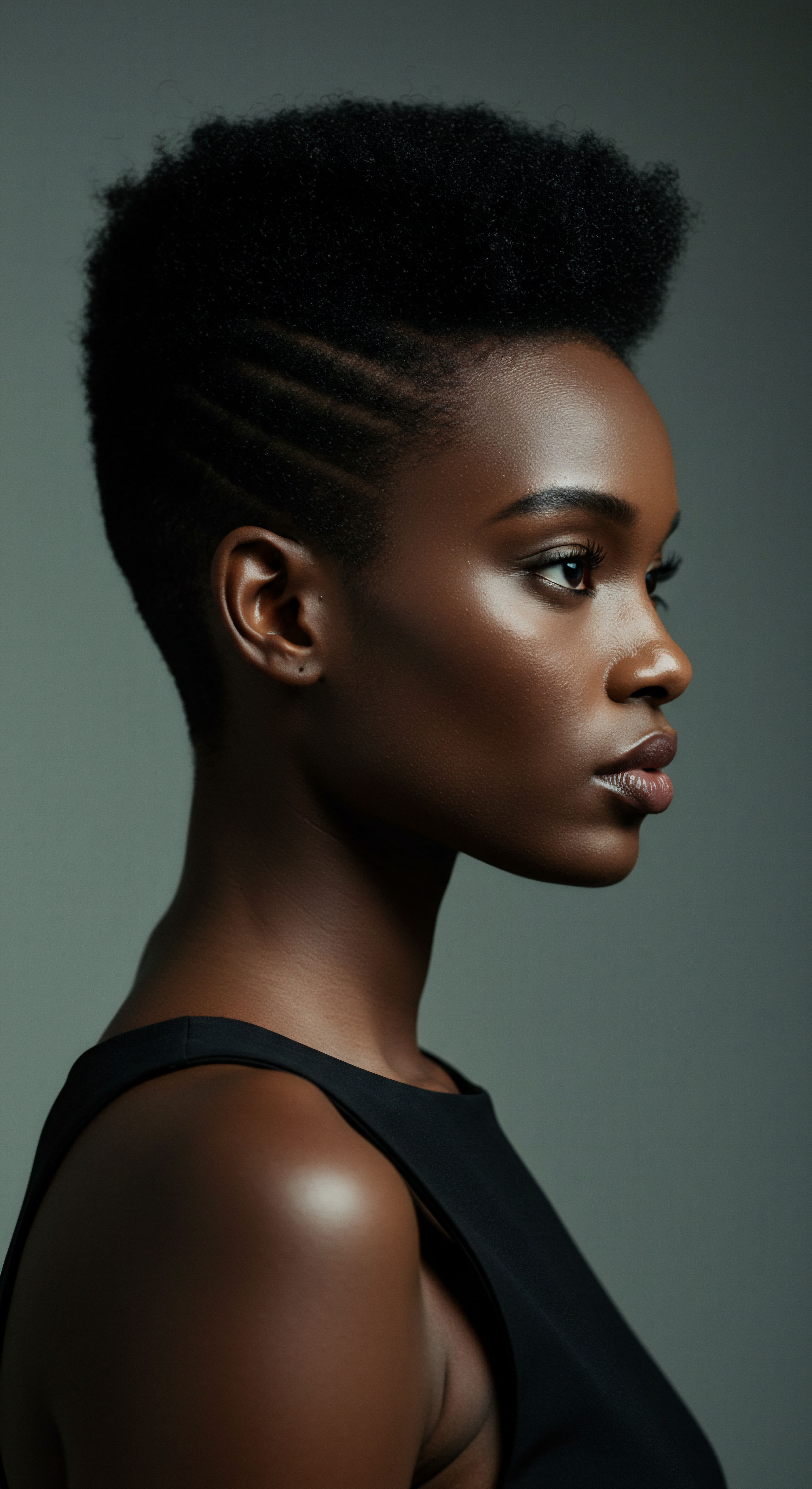
Protective Styling Encyclopedia
The concept of protective styling, so central to modern textured hair care, finds its deepest roots in ancient African traditions. These styles were not merely decorative; they served a crucial function ❉ safeguarding the hair from environmental damage, reducing manipulation, and promoting length retention. Braids, twists, and various forms of updos were commonplace, each adapted to different hair types, social statuses, and occasions.
Consider the longevity of certain styles, meticulously crafted to last for weeks or even months, allowing the hair beneath to rest and grow. This deliberate approach to styling minimized the constant combing and handling that can lead to breakage, a challenge still faced by many with textured hair today. The wisdom lay in understanding that hair thrives when shielded and left undisturbed.
| Ancient Practice Cornrows |
| Description Hair plaited close to the scalp in linear patterns. |
| Modern Parallel Feed-in braids, Lemonade braids |
| Ancient Practice Bantu Knots |
| Description Hair sectioned and coiled into small, firm buns. |
| Modern Parallel Knot-outs, heatless curl sets |
| Ancient Practice Threaded Styles |
| Description Hair wrapped tightly with thread to stretch and protect. |
| Modern Parallel African threading, banding for stretching |
| Ancient Practice Intricate Updos |
| Description Hair gathered and secured high on the head, often adorned. |
| Modern Parallel High buns, pineapple method for sleep |
| Ancient Practice These styles protected hair from elements and daily wear, a practice sustained today. |

Natural Styling and Definition Techniques
Beyond protective styles, ancient Africans developed numerous techniques to define and enhance the natural beauty of their hair’s texture. These methods often involved the skillful manipulation of damp hair, combined with natural emollients and fixatives derived from plants. The goal was to coax the hair into its most vibrant form, allowing its unique pattern to shine.
Finger coiling, twisting, and braiding were not just styling methods; they were ways of encouraging curl definition. The application of various plant-based gels and butters helped to seal in moisture and provide hold, allowing styles to last without excessive manipulation. This direct interaction with the hair, feeling its texture and understanding its response, fostered an intuitive artistry that is still practiced in modern natural styling.
Ancient styling methods, rooted in direct hair manipulation and botanical aids, reveal a timeless quest for natural curl definition.

Wigs and Hair Extensions Mastery
The use of wigs and hair extensions, often perceived as modern inventions, also has a long and rich history in African cultures. From ancient Egypt to various West African societies, wigs and added hair served diverse purposes, including status symbols, ceremonial wear, and even practical solutions for hair preservation. These were crafted with remarkable skill, often from human hair, plant fibers, or wool, and adorned with precious materials.
The artistry involved in creating these additions was considerable, reflecting a deep understanding of hair manipulation and aesthetic principles. Modern extensions and wigs, while utilizing contemporary materials and manufacturing techniques, continue this legacy of versatility, allowing for transformations that honor personal expression and protect one’s natural hair underneath. The historical use of such hair enhancements points to a continuous desire for stylistic freedom and hair health.

Heat Styling and Thermal Reconditioning with a Safety-First Approach
While chemical relaxers are a more recent development, methods of heat application to alter hair texture have existed in various forms for centuries. Early African societies, however, approached such techniques with an inherent understanding of moderation and protection. Tools like heated stones or specialized combs were sometimes used to stretch or straighten hair, but these practices were often balanced with deep conditioning treatments and protective measures to minimize damage.
The emphasis was on temporary alteration for specific purposes, rather than permanent structural change. This historical context provides a valuable lesson for modern heat styling ❉ the importance of a safety-first approach. Understanding hair’s resilience and its limits, and prioritizing its health above all else, is a wisdom that echoes from ancient practices into contemporary recommendations for thermal reconditioning.
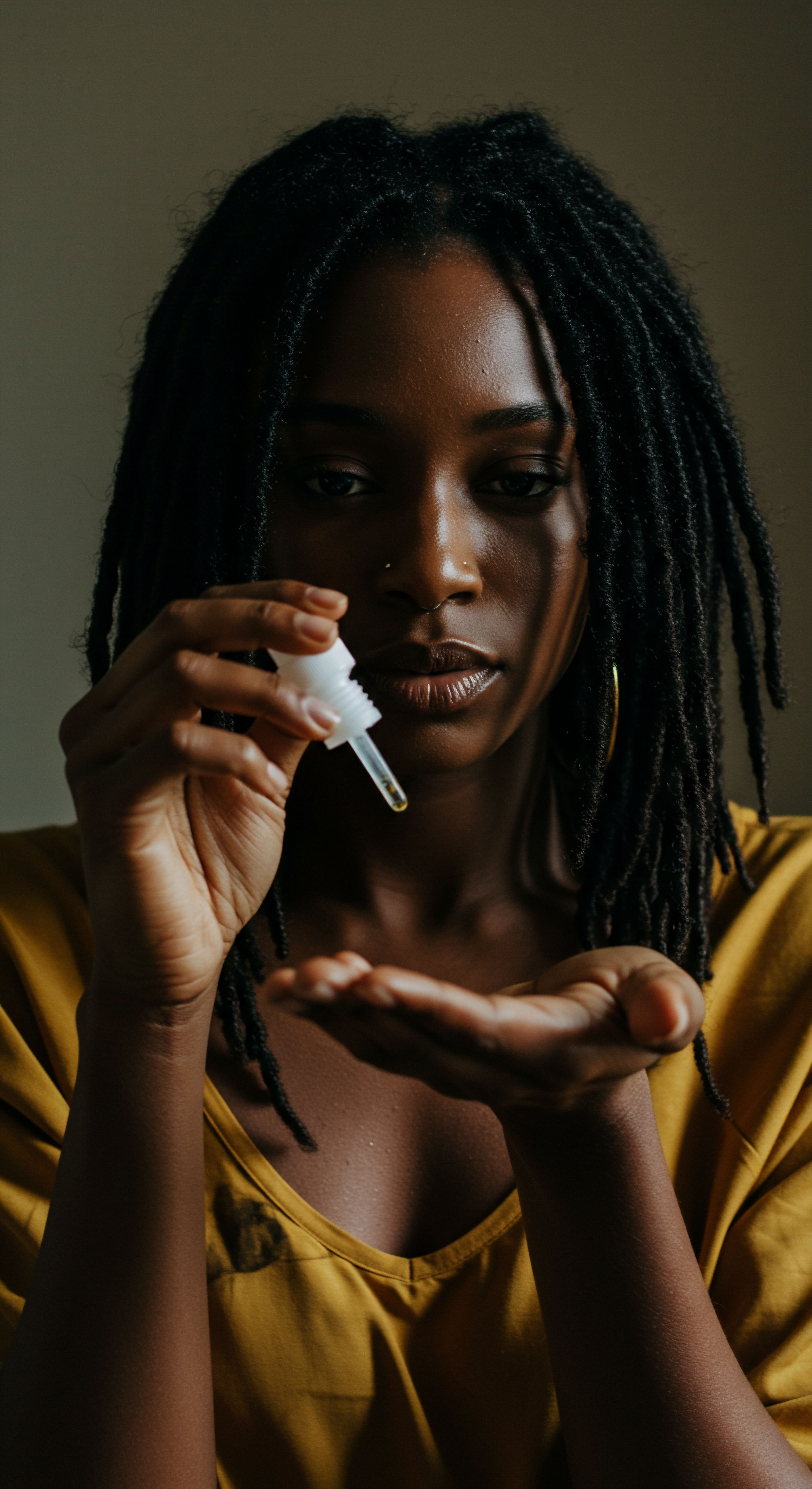
The Complete Textured Hair Toolkit
The tools used in ancient African hair care, though simple, were highly effective and thoughtfully designed. Combs carved from wood or bone, specialized pins, and various natural fibers for braiding were common. These implements were often handcrafted, reflecting a deep connection to the materials and the purpose they served.
- Wooden Combs ❉ Gentle on strands, minimizing snagging and breakage, unlike some modern plastic alternatives.
- Natural Fibers ❉ Used for extensions and braiding, providing natural grip and breathability.
- Hair Pins and Ornaments ❉ Crafted from local materials, serving both functional and decorative roles.
Today’s textured hair toolkit, while expanded with new technologies, still draws parallels. Wide-tooth combs, detangling brushes designed for curls, and silk or satin accessories for protection all echo the ancestral understanding of hair’s delicate nature. The consistent thread is the selection of tools that work harmoniously with textured hair, preventing damage and promoting its natural beauty.

Relay
The echoes of ancient African hair practices extend far beyond mere techniques; they resonate within the very fabric of identity, economy, and well-being today. This is where the profound interconnectedness of heritage, science, and contemporary life becomes most apparent. What began as communal rituals and resourceful applications of nature’s bounty has relayed into a global conversation about self-acceptance, cultural reclamation, and even economic empowerment.
This section will venture into the deeper currents of this relationship, drawing on research and data to illuminate how ancestral wisdom continues to shape the modern landscape of textured hair care, from the intimate choices of individuals to broader societal shifts. It is a testament to the enduring power of these traditions, proving their relevance is not confined to history books but actively shapes our present.

Building Personalized Textured Hair Regimens
Ancient African hair care was inherently personalized. There was no single, universal regimen; instead, practices were adapted to individual hair types, regional climates, and available natural resources. This intuitive customization meant that care was always responsive to the hair’s unique needs and the environment it inhabited. The community aspect often meant shared knowledge, where experienced hands guided younger generations in understanding their specific hair’s requirements.
Modern personalized regimens mirror this approach. While we have scientific terms like “porosity” and “density,” the underlying principle remains the same ❉ understanding one’s own hair and crafting a routine that addresses its specific thirst for moisture, protein, or gentle handling. The ancestral practice of attentive observation and responsive care continues to be the bedrock for effective personalized hair health today.

The Nighttime Sanctuary Essential Sleep Protection and Bonnet Wisdom
The wisdom of protecting hair during sleep is an ancient one, long understood in African cultures. While the modern bonnet or silk pillowcase might seem like a contemporary invention, the practice of covering or securing hair at night to preserve styles, retain moisture, and prevent tangling is a direct continuation of ancestral foresight. Scarves, wraps, and various forms of head coverings were utilized for this purpose, reflecting a deep respect for hair’s vulnerability during rest.
This seemingly simple act of nighttime protection significantly reduces friction, which can lead to breakage and frizz, especially for delicate textured strands. It allows styling efforts to last longer, minimizes manipulation, and helps maintain the hair’s moisture balance. The bonnet, therefore, is not just a piece of fabric; it is a direct descendant of ancient wisdom, offering a practical, accessible solution for preserving hair health through the night.
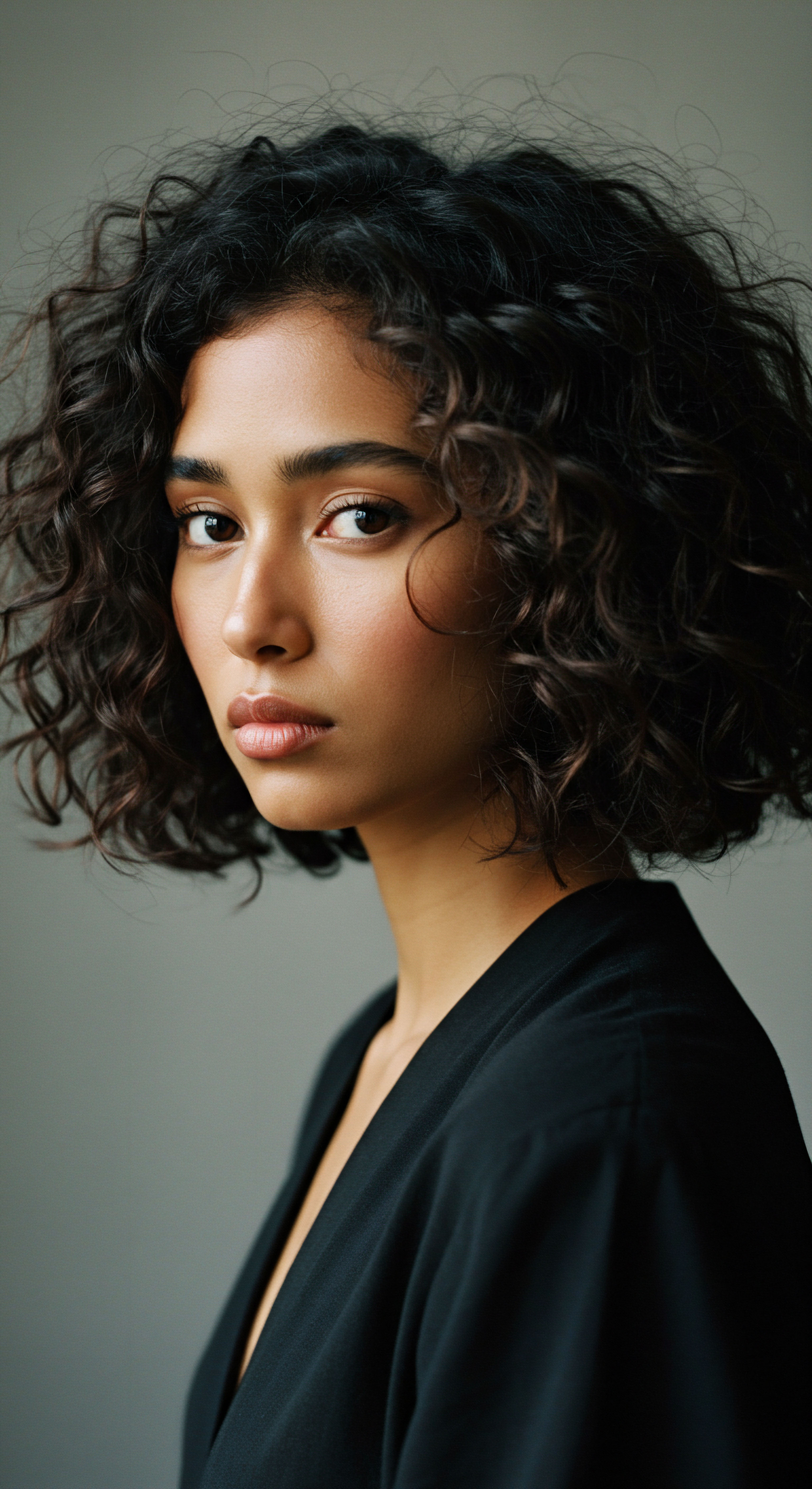
Ingredient Deep Dives for Textured Hair Needs
The pharmacopoeia of ancient African hair care was vast, drawing from the rich botanical diversity of the continent. Ingredients like shea butter, various plant oils (such as argan and marula), and clays (like rhassoul) were staples, valued for their moisturizing, strengthening, and cleansing properties. These were often prepared and applied in their raw, unrefined forms, maximizing their potency.
Modern science now validates many of these traditional ingredients. Shea butter, for instance, is recognized for its rich fatty acid profile, providing deep conditioning. Rhassoul clay is celebrated for its gentle cleansing and mineral content, beneficial for scalp health. The continued prominence of these natural components in contemporary textured hair products represents a direct lineage from ancestral knowledge, demonstrating a timeless understanding of what textured hair truly needs to thrive.
| Ancient Ingredient Shea Butter (Butyrospermum parkii) |
| Traditional Use Moisturizing, softening, scalp care. |
| Modern Scientific Recognition/Application Emollient, high in fatty acids (oleic, stearic), anti-inflammatory. Used in conditioners, masks, styling creams. |
| Ancient Ingredient Rhassoul Clay (Moroccan Lava Clay) |
| Traditional Use Cleansing, detoxifying scalp, conditioning. |
| Modern Scientific Recognition/Application High mineral content (silica, magnesium, calcium), gentle exfoliant, absorbs excess sebum. Used in cleansing masks, shampoos. |
| Ancient Ingredient Marula Oil (Sclerocarya birrea) |
| Traditional Use Moisturizing, protective. |
| Modern Scientific Recognition/Application Rich in antioxidants, oleic acid, linoleic acid. Light, non-greasy. Used in serums, oils, leave-in conditioners. |
| Ancient Ingredient Chebe Powder (Croton zambesicus, etc.) |
| Traditional Use Length retention, strengthening. |
| Modern Scientific Recognition/Application Contains anti-inflammatory properties, helps retain moisture between washes. Popular in length retention treatments. |
| Ancient Ingredient The enduring utility of these natural ingredients bridges ancient wisdom with contemporary hair science. |
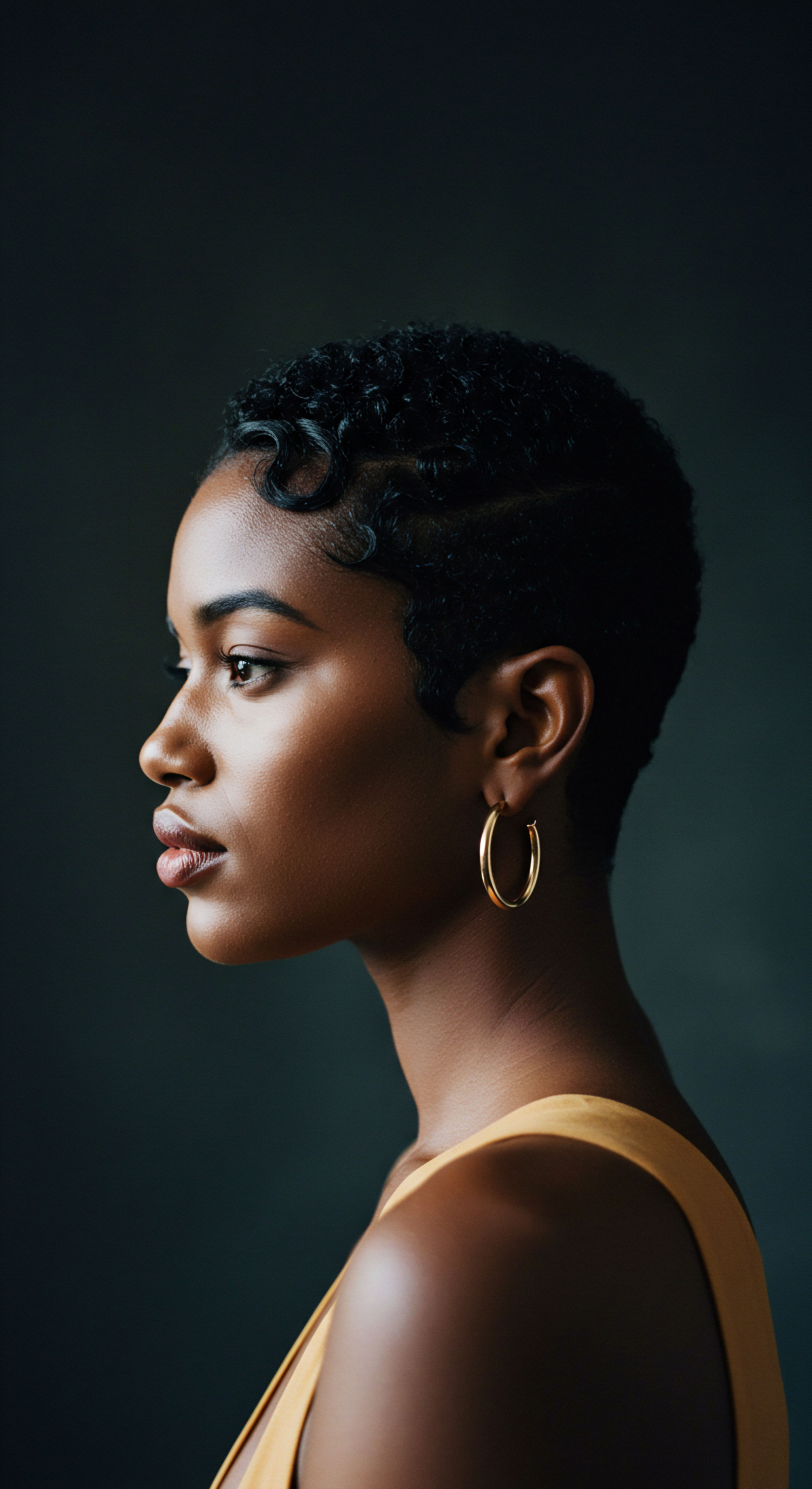
Textured Hair Problem Solving Compendium
Just as modern hair care seeks solutions for common concerns like dryness, breakage, and scalp issues, ancient African practices offered remedies grounded in natural wisdom. Hair loss, dandruff, and scalp irritation were addressed with specific herbs, oils, and techniques, reflecting a proactive approach to hair health. The absence of harsh chemicals in these historical practices often meant that remedies were gentle and supportive of the hair’s natural balance.
Consider the use of certain plant extracts for their anti-inflammatory properties to soothe an irritated scalp, or specific oils applied to strengthen strands and minimize shedding. This practical problem-solving, rooted in observation and experimentation with nature’s offerings, forms a continuous line to modern formulations that aim to address similar challenges, often by revisiting these very botanicals.

Holistic Influences on Hair Health
The relationship between ancient African hair practices and modern routines is perhaps most evident in the holistic understanding of hair health. In many African societies, hair was not separate from the body or spirit; it was deeply interconnected with overall well-being, social standing, and spiritual connection. This integrated view meant that hair care was often intertwined with diet, community interaction, and spiritual rituals.
The profound impact of this holistic perspective is seen in the economic landscape of today’s natural hair movement. A 2019 report by American Express revealed that businesses owned by African American women grew 164% from 2007 to 2019, with a significant portion of this growth occurring in the beauty and personal care sectors, fueled directly by the natural hair movement. This economic expansion is not simply about product sales; it represents a reclaiming of agency, a celebration of identity, and the creation of community-centered enterprises that echo the communal spirit of ancient hair care.
The natural hair movement’s economic power is a modern manifestation of a deeper cultural return, where hair is recognized as a vital aspect of identity and a catalyst for collective progress. This economic shift demonstrates how embracing natural textures has created a thriving industry, allowing for self-definition and supporting entrepreneurs who cater to specific hair needs, a powerful continuation of self-reliance and community support.
The growth of Black women-owned businesses in the natural hair sector, driven by a cultural reclamation, showcases a powerful economic continuation of ancestral self-reliance.
Furthermore, research into “PsychoHairapy” explores the therapeutic potential of hair care settings for mental well-being, drawing direct parallels to the historical role of hairstylists in traditional Yoruba societies who held spiritual power and performed rituals to help emotional balance. This connection highlights how the communal and ritualistic aspects of hair care, far from being mere vanity, serve as vital spaces for identity affirmation, stress reduction, and mental health support. The very act of caring for one’s hair, especially within a supportive community, becomes a pathway to greater self-acceptance and resilience in the face of societal pressures.

Reflection
The journey through ancient African hair practices to the present day reveals a continuous dialogue, a gentle whisper across centuries. What surfaces is not a mere collection of antiquated methods, but a living legacy, breathing and adapting in our contemporary world. The delicate coils and resilient strands of textured hair carry within them not just genetic coding, but the wisdom of generations who understood hair as a conduit for identity, community, and self-expression.
Our modern routines, from the ingredients we choose to the protective styles we adopt, are quietly echoing these ancestral truths. This enduring connection reminds us that caring for our hair is more than a task; it is an honoring, a participation in a timeless ritual that celebrates who we are and where we come from.

References
- Afriklens. (2024, November 1). African Hairstyles ❉ Cultural Significance and Legacy.
- The Economic Commission for Africa. (2019). Small and Medium Enterprises in Africa’s Haircare Industry. (Referenced in “The Economics of the Natural Hair Movement ❉ The Rise of Loc/Dreadlocks Entrepreneur” by ResearchGate, 2023).
- Glass Ladder Group. (2025, January 10). A Cultural Perspective on the Natural Hair Movement Around the World.
- International Journal of Arts and Social Science. (2020). Historical Roots of Makai Hairstyle of Elmina People of Ghana.
- Mbilishaka, O. A. (2024, October 22). PsychoHairapy ❉ Using Hair as an Entry Point into Black Women’s Spiritual and Mental Health. ResearchGate.
- Africa Imports. (n.d.). Traditional African Secrets For Long And Healthy Hair.
- Maharaj, C. (2025, May 15). Beyond the roots ❉ exploring the link between black hair and mental health. TRIYBE.
- Formula Botanica. (n.d.). 10 Natural African Skincare Ingredients.
- Dermatologic Clinics. (2023, November 30). What Every Dermatologist Must Know About the History of Black Hair.